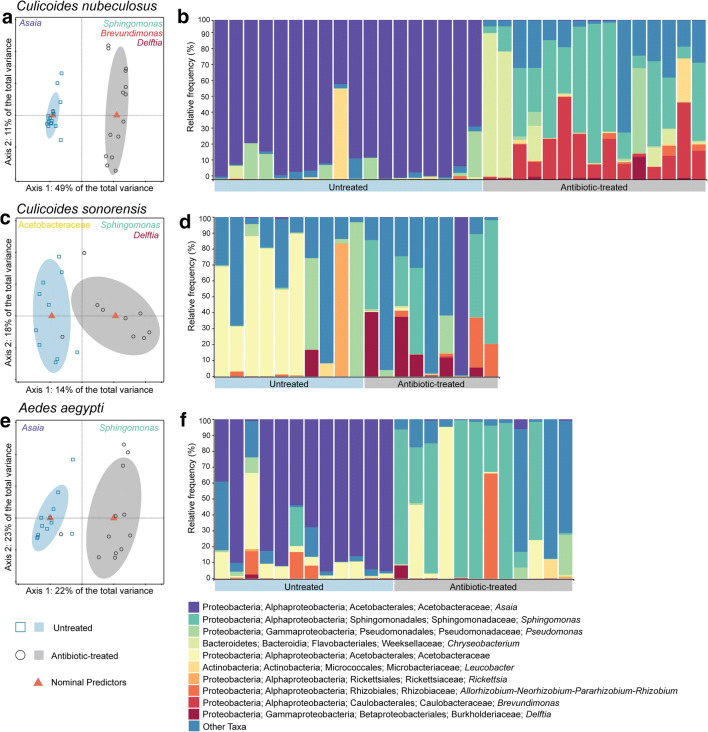Fig. 2.
Overview of bacterial communities in untreated and antibiotic-treated biting midges and mosquitoes. RDA of logarithm of the fraction of bacteria in untreated and antibiotic-treated females of Culicoides nubeculosus (panel a; N = 33, DF = 1, F = 30.0, p = 0.001), C. sonorensis (panel c; N = 19, DF = 1, F = 2.7, p = 0.001), and Aedes aegypti (panel e; N = 24, DF = 1, F = 6.1, p = 0.001). Ellipses show 66% confidence levels (± 1 time the standard deviation). A maximum of three taxa correlated with the untreated or antibiotic-treated groups are named at the top of panels a, c, and e for each species. b, d, f Taxa-plots at genus level, on the relative frequency for each taxon, of the total number of midgut bacteria in the community composition are presented. The 10 most abundant bacterial taxa are presented for midgut bacterial communities in C. nubeculosus, C. sonorensis, and Ae. aegypti. Less abundant taxa were grouped as “Other taxa” to increase visualization for the taxa plots. Each bar represents the relative frequency of bacterial taxa in one pool of five abdomens

